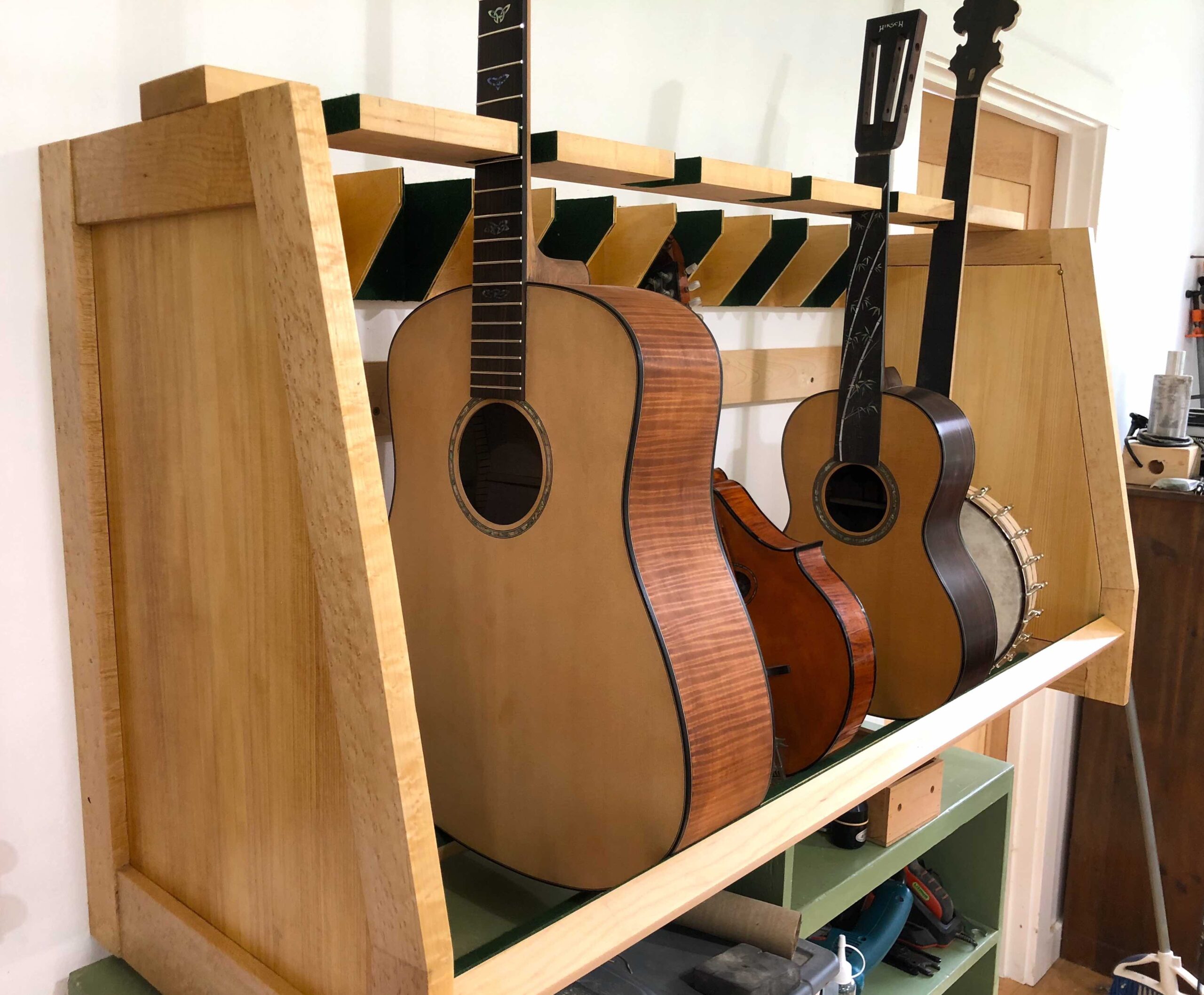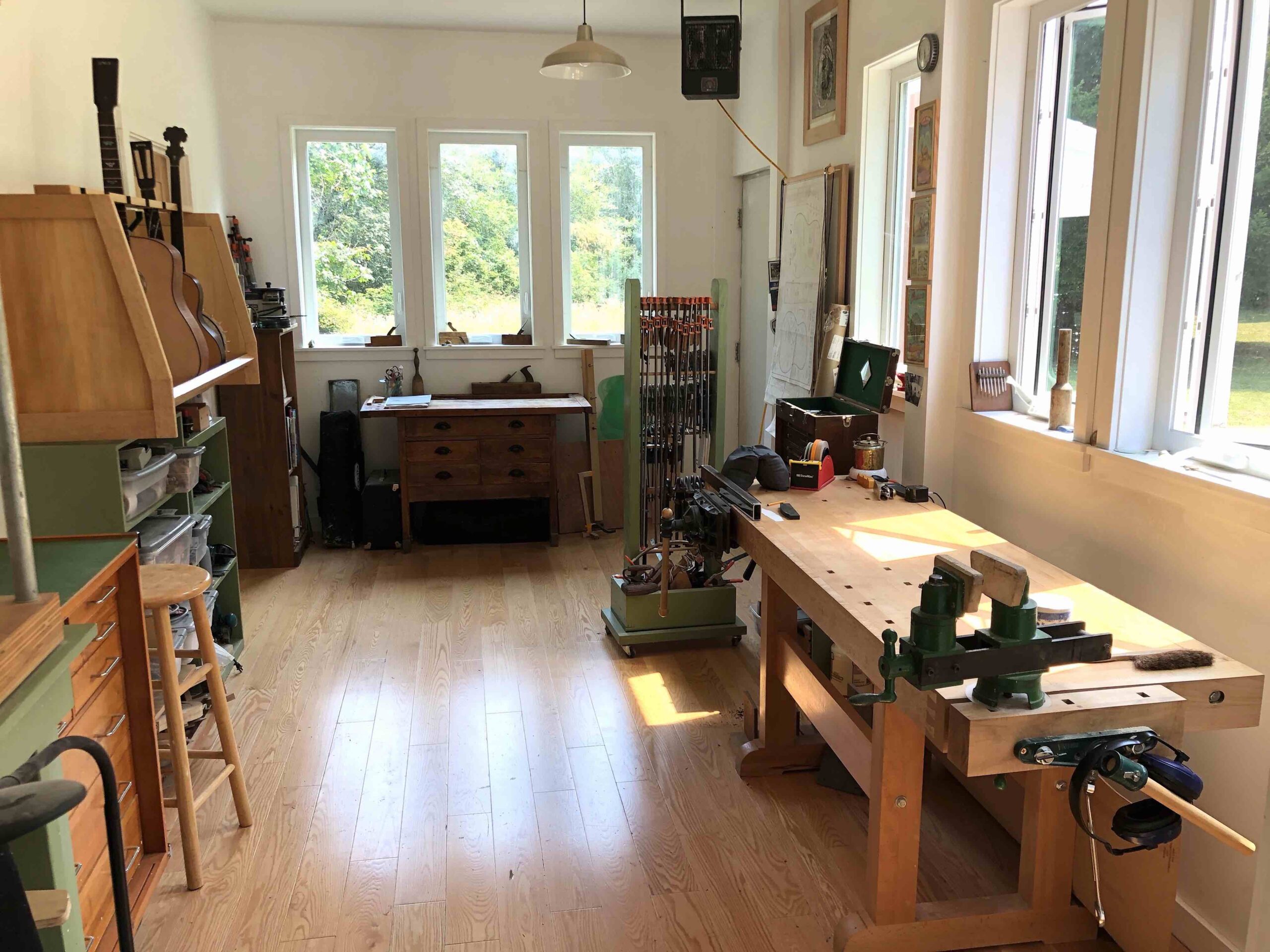
For years, I made do with an instrument rack that was good for holding full size guitars in a safe location but not much else. It kept average size guitars I wasn’t working on at the moment off my bench but it barely held a parlor guitar and mandolins were right out. In addition to those limitations, my previous rack was decidedly not a thing of beauty. A couple of years ago, when I started building my present and last shop, I made the decision that, wherever possible, I would make it attractive. I wanted my surroundings to be inspirational with the idea being that doing so would translate to the aesthetic qualities of my instruments. So, when I began to outfit my new shop, I knew I wanted to make a rack that was not only more versatile and functional, but also looked like a piece of fine furniture, something in keeping with the level of woodworking involved with building fine instruments. This might seem like a very minor thing, but I thought, if I carried out that mindset when and where ever I could, cumulatively, it would make a difference. I had that in mind when I built my shop with lots of tall upswept windows. It was also what I had in mind when I built my latest and probably last bench with it’s beautiful Birdseye maple framing and straight grained field of beech. It was also why I developed and am continuing to build storage where things can be put away and not have to live with a cluttered bench. So, now it was time to put that same approach to work on my instrument rack.
My first concern, that of making this new rack capable of safely and securely holding all the different instruments that I build, turned out to be a lot harder than I’d ever imagined. I ended up drafting out the rough shape of the rack with all the different shapes of all the instruments I presently build, from “Soprano” to full sized mandolins, from the smallest sized lady’s parlor guitars to full on dreadnoughts inset or overlayed onto that rough shape. I also drafted in instruments I didn’t presently build but wanted to in the near future like ukuleles and Mandolas as well as oddly proportioned full size guitars like my take on the Gibson L model guitar, an extremely feminine shape distinguished by its very rounded bouts. Sorry if my descriptions are getting overly graphic. Anyway, what I quickly discovered was that it was pretty hard to make one rack that would accommodate all those different sizes and shapes and do so in a way that still had some grace and beauty to it. To make matters worse, I’d begun the designing phase of this little exercise with a preconceived notion of what this rack was going to end up looking like. Well, that idea had to be discarded pretty early on and what I ended up with was a modified form of frame and panel construction, with support bars and dividers like you would find in the pigeon hole section of an old fashioned oak office desk.

Fortunately, I have no shortage of off cuts of beautiful woods and I really liked what I had to work with. First, the frame pieces on the ends were made from some incredibly busy Birdseye maple. It was beautiful stuff, just not big enough in the dimensions I’d need to use in any of my instruments. The panels were even easier. Over the years, one of my instrument wood suppliers would ship guitar faces and backs sandwiched between Red Spruce face wood that, once cut and sanded to final dimension, showed that the needed tonal requirements weren’t present and couldn’t be sold for instrument work. However, as I wasn’t going to be playing this rack, they would fit right in as the panel ends on a rack holding instruments made with faces of spruce. The support bars were from off cuts of some long pieces of Beech that I’d used to build my bench. The bearing surfaces were covered with the high density green felt I’d gotten from the Gerstner tool chest company when I rebuilt my old Gerstner tool box and it’s exactly what was called for. Here’s what I came up with pictured in a couple of close up shots and in situ in it’s native habitat, my studio.


